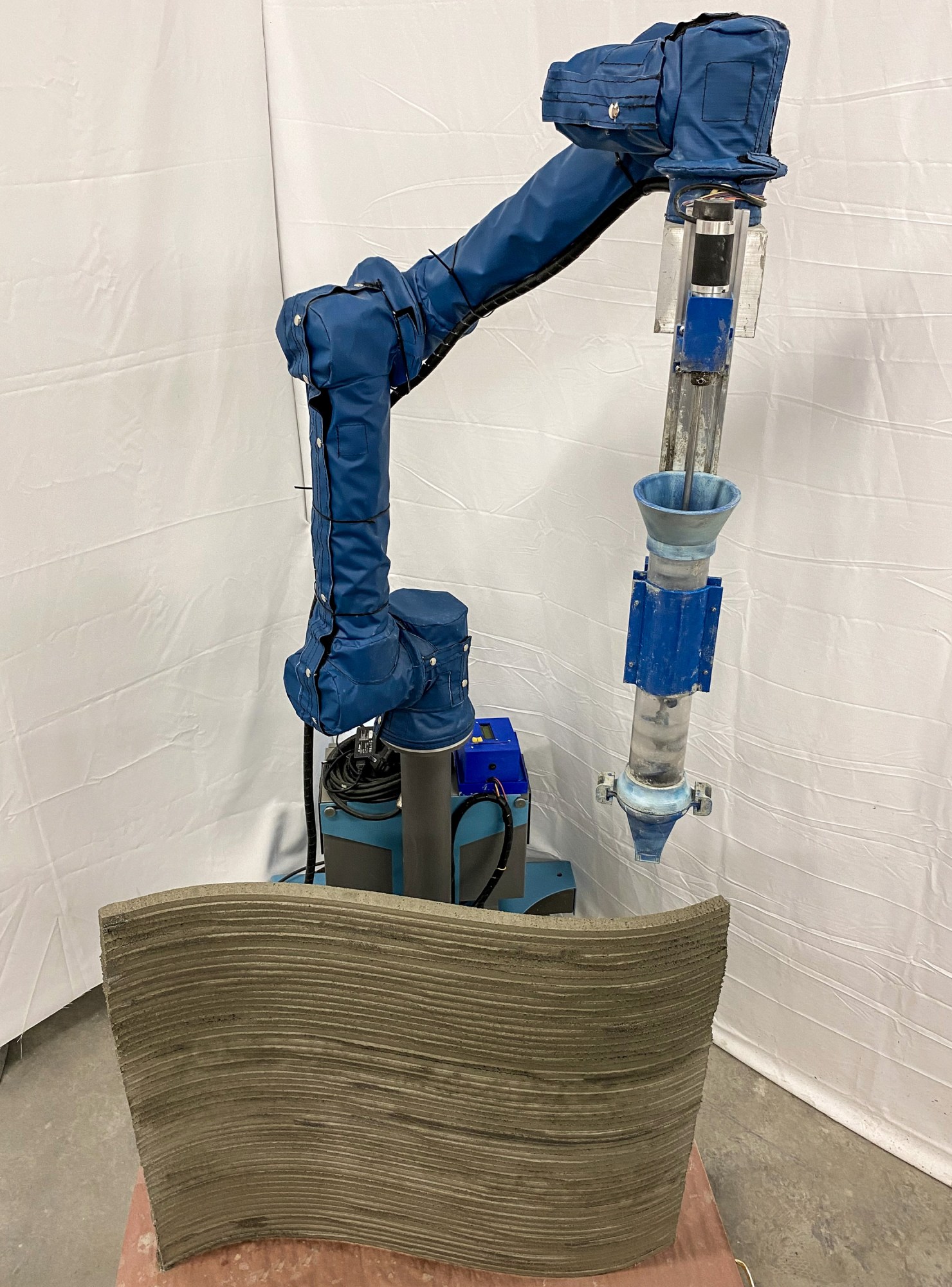Subtotal: 207,27€ (incl. VAT)
The moon is just the beginning for this waterless concrete
If NASA establishes a permanent presence on the moon, its astronauts’ homes could be made of a new 3D-printable, waterless concrete. Someday, so might yours. By accelerating the curing process for more rapid construction, this sulfur-based compound could become just as applicable on our home terrain as it is on lunar soil.
Artemis III—set to launch no earlier than September 2026—will not only mark humanity’s return to the moon after more than 50 years, but also be the first mission to explore the lunar South Pole, the proposed site of NASA’s base camp.
Building a home base on the moon will demand a steep supply of moon-based infrastructure: launch pads, shelter, and radiation blockers. But shipping Earth-based concrete to the lunar surface bears a hefty price tag. Sending just 1 kilogram (2.2 pounds) of material to the moon costs roughly $1.2 million, says Ali Kazemian, a robotic construction researcher at Louisiana State University (LSU). Instead, NASA hopes to create new materials from lunar soil and eventually adapt the same techniques for building on Mars.
Traditional concrete requires large amounts of water, a commodity that will be in short supply on the moon and critically important for life support or scientific research, according to the American Society of Civil Engineers. While prior NASA projects have tested compounds that could be used to make “lunarcrete,” they’re still working to craft the right waterless material.
So LSU researchers are refining the formula, developing a new cement based on sulfur, which they heat until it’s molten to bind material without the need for water. In recent work, the team mixed their waterless cement with simulated lunar and Martian soil to create a 3D-printable concrete, which they used to assemble walls and beams. “We need automated construction, and NASA thinks 3D printing is one of the few viable technologies for building lunar infrastructure,” says Kazemian.

COURTESY OF ALI KAZEMIAN
Beyond circumventing the need for water, the cement can handle wider temperature extremes and cures faster than traditional methods. The group used a pre-made powder for their experiments, but on the moon and Mars, astronauts might extract sulfur from surface soil.
To test whether the concrete can stand up to the moon’s harsh environment, the team placed its structures in a vacuum chamber for weeks, analyzing the material’s stability at different temperatures. Originally, researchers worried that cold conditions on the dark side of the moon might cause the compound to turn into a gas through a process called sublimation, like when dry ice skips its liquid phase and evaporates directly. Ultimately, they found that the concrete can handle the lunar South Pole’s frigid forecast without losing its form.
Some conditions, like reduced gravity, could even work toward the concrete’s advantage. The experiment tested structures like walls and small circular towers, each made by stacking many layers of concrete. “One of the main challenges in larger-scale 3D printing is a distortion of these thick, heavy layers,” says Kazemian “But when you have lower gravity, that can actually help keep the layers from deforming.”
Kazemian and his colleagues recently transferred the technology to NASA’s Marshall Space Flight Center in Huntsville, Alabama, to implement their design on a larger-scale robotic system and test construction in larger vacuum chambers. If adopted, the concrete will most likely be used for taller lunar structures like habitats and radiation shields. Flatter designs, like a landing pad, will probably use laser-based technologies to melt down lunar soil into a ceramic structure.
There may only be so much testing we can do on Earth, however. According to Philip Metzger, a planetary physicist at University of Central Florida who recently retired from NASA’s Kennedy Space Center, the concrete’s efficacy may falter with the shift from simulant to real soil. “There’s chemistry in the samples of these planets that the simulants cannot perfectly replicate,” he says. “When we send missions to these planetary bodies to test the technology using the real soil, we may find that we need to further improve the technology to get it to work in that environment.”
But Metzger still sees the sulfur-based concrete as a vital foundation for the tall orders of upcoming planetary projects. Future missions to Mars could demand roads to drive back and forth from ice-mining sites and pavement around habitats to create dust-free work zones. This new concrete brings these distant goals a touch closer to reality.
It could benefit construction on Earth, too. Kazemian sees the new material as a potential alternative for traditional concrete, especially in areas with water scarcity or a surplus of sulfur. Parts of the Middle East, for example, have abundant sulfur as a result of oil and gas production.
The technology could become especially useful in disaster areas with broken supply chains, according to Metzger. It could also have military applications for rapid construction of structures like storage buildings. “This is great for people out there working on another planet who don’t have a lot of support,” Metzger says. “But there are already plenty of analogs to that here on Earth.”


